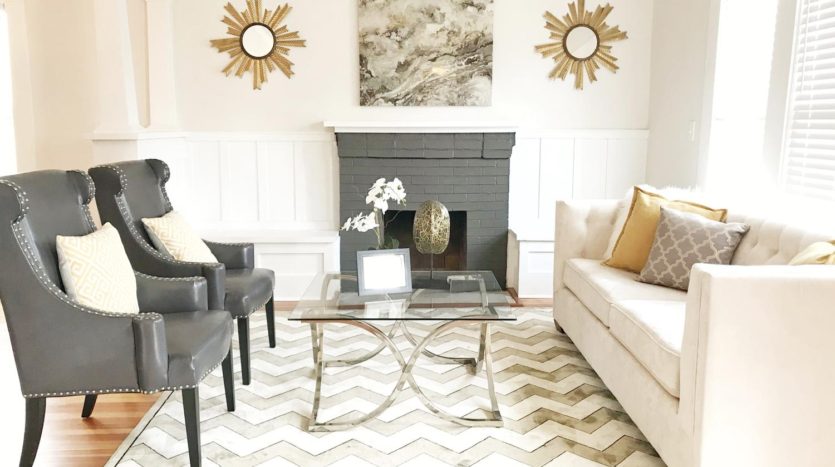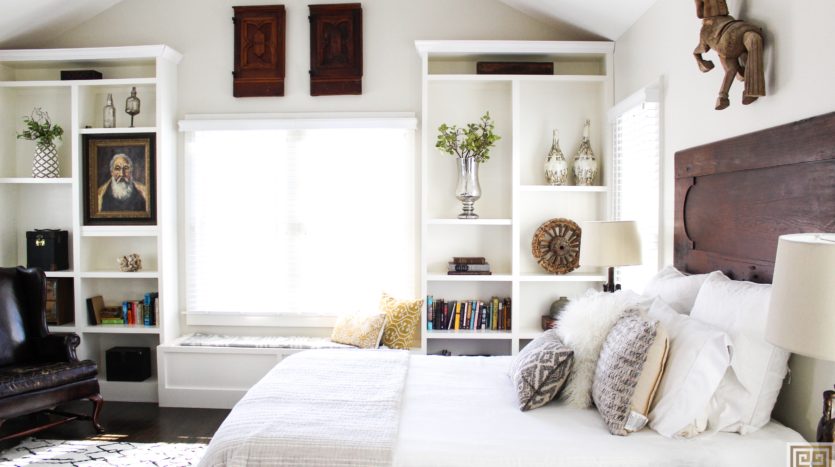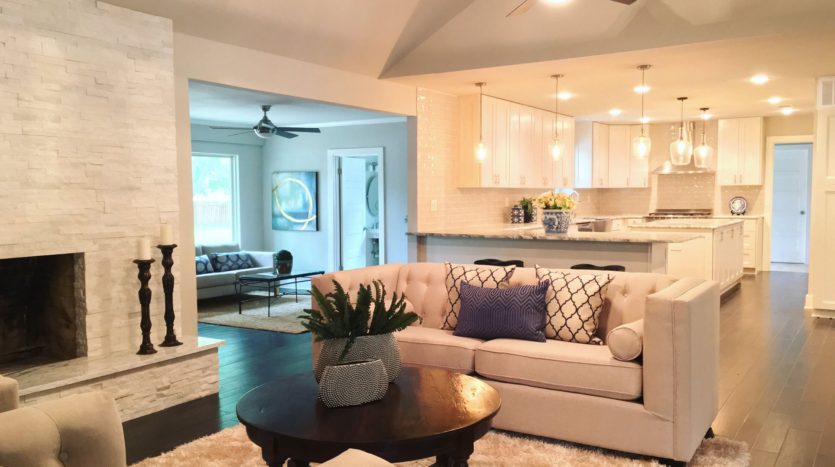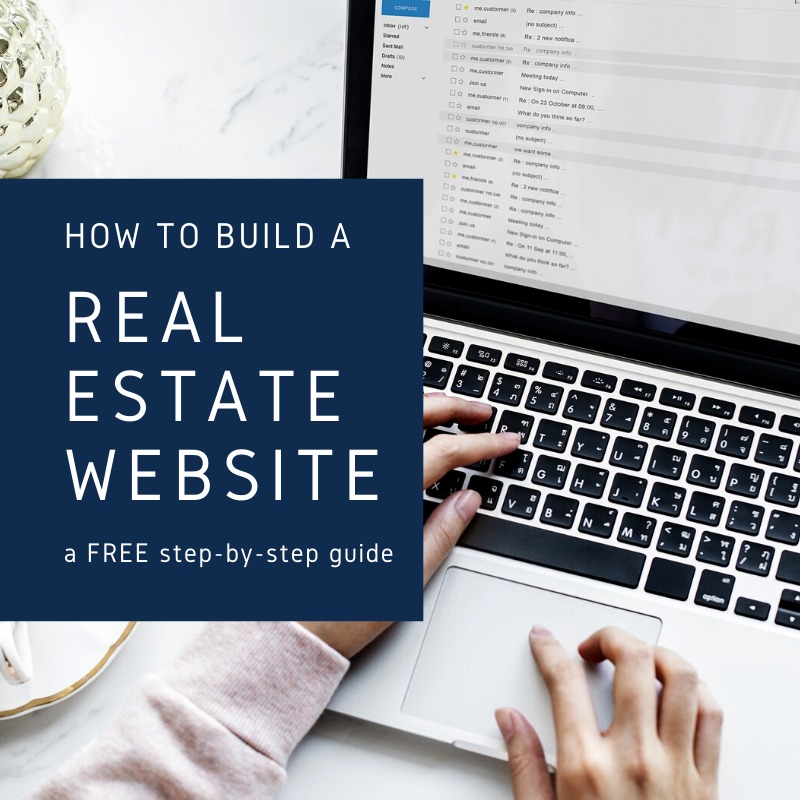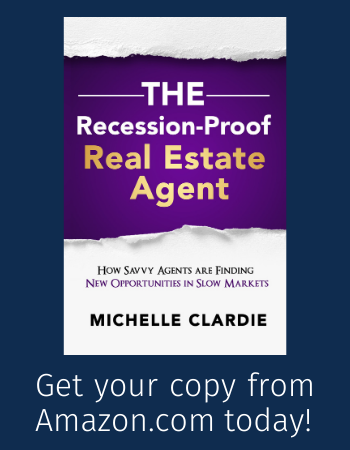Want to make your listings sell faster? And for a higher price? Want to distinguish yourself from the gaggle of real estate agents in your market?
Then you’re going to want to pay attention to today’s post! Today we’re talking to Debbie Boggs of Staging Studio, on how home staging services can effectively recession-proof your real estate business.
Along with her friend and business partner, Julie Young, Debbie built an award-winning staging business, BY Design Home Staging. And now Debbie and Julie are teaching their staging secrets to others! Staging Studio provides several free resources for anyone looking to learn more about staging. They even offer multiple online courses to fit the needs of their clients: homeowners who want to stage their own homes, entrepreneurs who want to launch their own staging business, and Real Estate Agents who want to distinguish themselves from the competition by earning a Staging Design Agent™ Designation.
This is your chance to learn insider staging tips from the pros.
Today we’ll cover:
- the importance of staging
- how staging can recession-proof your real estate business
- the most common staging mistakes (and fixes!)
- how to get started in staging
Enjoy!
Photo courtesy of Staging StudioThe Importance of Staging
Real estate agents all advise buyers, time and time again, to look past the hideous furniture, the garish paint colors, and the weird knick-knacks. But really, all of those things contribute to the overall feel of the home when the buyers walk in. It’s human nature to be emotionally affected by an environment. It’s why we bake cookies during open houses, right?
The better buyers feel about a home, the more likely they are to make an offer. It’s that simple.
Debbie was actually able to quantify this simple concept for us. Staging Studio has data comparing staged homes to un-staged homes. Let’s see how much staging affects the bottom line.
STAGED homes spend half the time of un-staged homes on the market, and sell for more than 6% above the asking price! Within 78 days, the average seller has discounted their home 8% in price reductions, while hiring a home stager typically costs 1.5% or less.
Let’s use a $200,000 listing price as an example.
- Un-staged: the average seller can expect to reduce the price by 8% over 78 days before going under contract. The likely sales price is $184,000.
- Staged: the seller can expect to spend around 1.5% to stage ($3,000 for our $200,000 example). But in return, the home goes under contract in only 39 days, and likely sells for 6% above asking, so $212,000. After deducting the staging expense, the seller is still netting $209,000.
Staging can make a $25,000 difference on a $200,000 home! What other investment is going to provide that kind of return?
Of course these figures are averages. Not all staged homes will go for 6% above asking, and not all un-staged homes will go for 8% under. But there is a wide margin here! Even if a particular listing only sells at listing price after staging, they still come out well ahead of the un-staged homes with their reduced prices and longer DOM.
How to Use Staging to Recession-Proof Your Business
This is all great for your sellers, but let’s talk about you as the Agent. How does staging impact your business?
Debbie explained the impact perfectly:
Not only will it help you get your listings, staging gets them SOLD! Staging creates an emotional attachment. In a buyer’s market when there are too many houses to go around, you need yours to stand out from the rest. During a seller’s market, you need the buyer to stay emotionally committed and not just take the house because it is the only thing available. You want them to last through every step: negotiation appraisal, inspection, etc.
Of course she’s absolutely right. Whether you’re dealing with too little inventory or too much, you need your listings to emotionally-engage buyers. And staging is the best way to do that.
Imagine selling your listings more quickly for more money. Your sellers receive the best possible service with the greatest possible returns. And you’re able to earn a higher commission in a shorter time-frame, along with a glowing testimonial from the sellers, whose expectations you’ve exceeded!
If you want to be known as the local Staging Expert Agent, consider getting your Staging Design Agent (S.D.A.)™ Designation. It’s a fantastic way to promote yourself. Will any of the other agents competing for your listings have this designation?
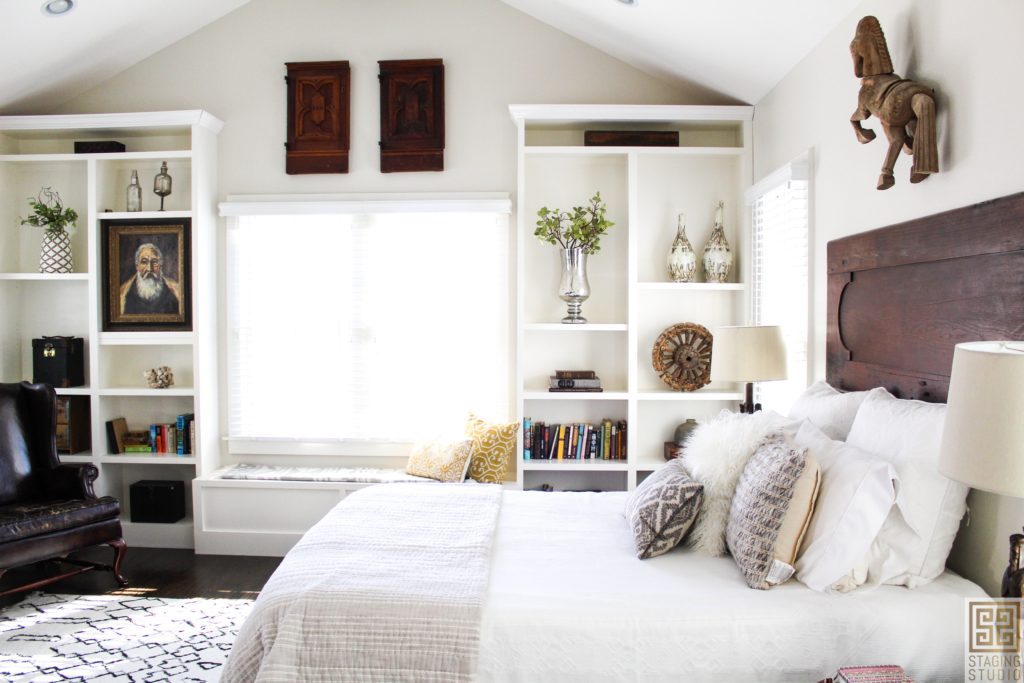
Photo Courtesy of Staging Studio
Common Staging Mistakes (and Fixes!)
Even if you’ve been offering staging advice for years, you may still be making some little-known staging mistakes. It’s all in the details.
Debbie has provided this incredibly helpful list of staging mistakes and solutions. Here is Staging Studio’s Top 13 Staging Mistakes You Didn’t Even Know You Were Making.
1. Art hung too high.
The center of the art should be about 62” above the floor, which is a comfortable eye level for most people.
2. Area rug too small.
The rug should be large enough for at least the front legs of the sofa and chairs to be on it. That means at least an 8’x10’ for most normal-sized living rooms. 5’x7’ will look skimpy and bring down the perceived value of the home.
3. Too much excess furniture.
Always allow at least 36” of walk space.
4. Intense paint colors.
Keep it light and neutral. This is not the time to express yo’ self.
5. A sea of beige.
While keeping the walls and floors neutral, add some pops of color in the pillows, accessories, art, and flowers.
6. Withering plants.
The perception is that if you can’t maintain a plant, you probably haven’t maintained the HVAC, water heater, etc.
7. Skipping the holiday bonus for your cleaning lady.
Everything must be white-glove, sparkly, spotless – from the baseboards to the ceiling fans and everything in between.
8. Showing the home vacant.
Buyers spend more time in staged homes, and the longer you can get them to hang around, the more likely they are to make an offer.
9. Allowing pets to remain in the home for showings.
Remove every trace of pets, including your furry friends, themselves. Some buyers will start sneezing just at the sight of a chew toy.
10. Displaying personal photos, diplomas, and memorabilia.
You want buyers to focus on the home, and not be distracted trying to calculate if you were in the same class as their cousin who attended your alma mater.
11. De-cluttering by jamming everything into the closets.
Storage space is high on your buyer’s list. If there is not enough room for your stuff, they know there will not be enough room for their stuff.
12. Neglecting the patio area.
Outdoor living is trending on the priority lists for today’s buyers. Create an irresistible stay-cation ambiance.
13. Offering a carpet allowance.
Go ahead and make whatever repairs and updates are needed. Buyers are as busy as you are and will opt for the hassle-free, move-in ready dream home.
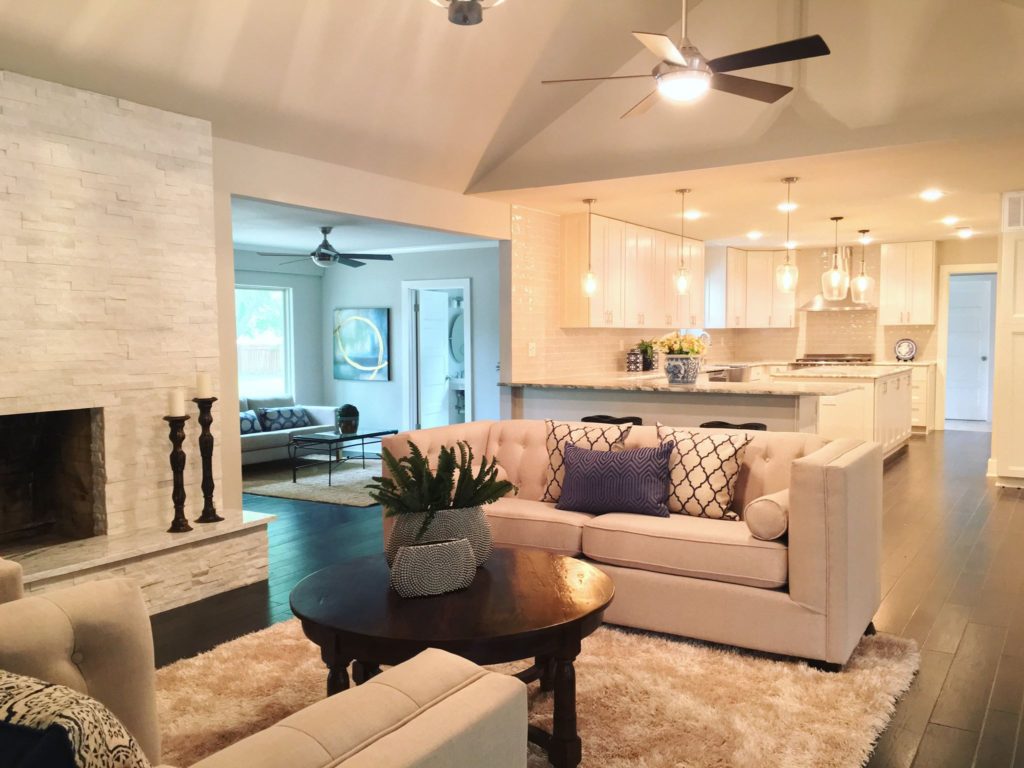
Photo Courtesy of Staging Studio
Ready to Start Staging?
Here’s a little Q&A with Debbie on the best way to get started in staging.
Q. How do I convince my clients to stage? What should my very first step be?
Get certified as a Staging Design Agent™.
Q. Do you have any tips for agents looking to promote themselves as a Staging Design Agents™?
Yes! We recommend they grow their instagram following in their area, showing the before-and-afters of their listings.
Q. Can agents stage without keeping an inventory of furniture and accessories on hand?
If Realtors® want more training but don’t actually want to hold inventory, they could easily become Staging Design Professionals™ and do what we call Occupied Consultations. This is where the homeowner does not move out and a stager helps rearrange the homeowner’s furniture so that it shows best. This includes knowing how to consult on paint and carpet, etc. This is a way of easing into the business.
Q. What if agents need to stage a vacant home? How do they go about renting furniture and accessories for staging?
We don’t recommend that realtors do the staging themselves. Hire a professional stager so that you can focus on getting more listings. Let the stager help you sell the listings quickly. There are many models stagers use for their businesses. The bigger companies usually have their own inventory, but smaller companies can be just as good. You want to look for stagers with an accreditation like the Staging Design Professional™ designation from Staging Studio. That way you know they were professionally trained and will deliver the results you expect. We also have a list of 10 questions to ask a stager before hiring them to make sure you are working with the best.
Thank you
Huge thank you to Debbie for sharing this business-changing information with our audience!
We encourage everyone to head over to Staging Studio for even more staging tips and more information on the Staging Design Agent™ Designation.
And if you’re looking for more ways to recession-proof your business, check out our list of 25+ ways to make money in real estate!

